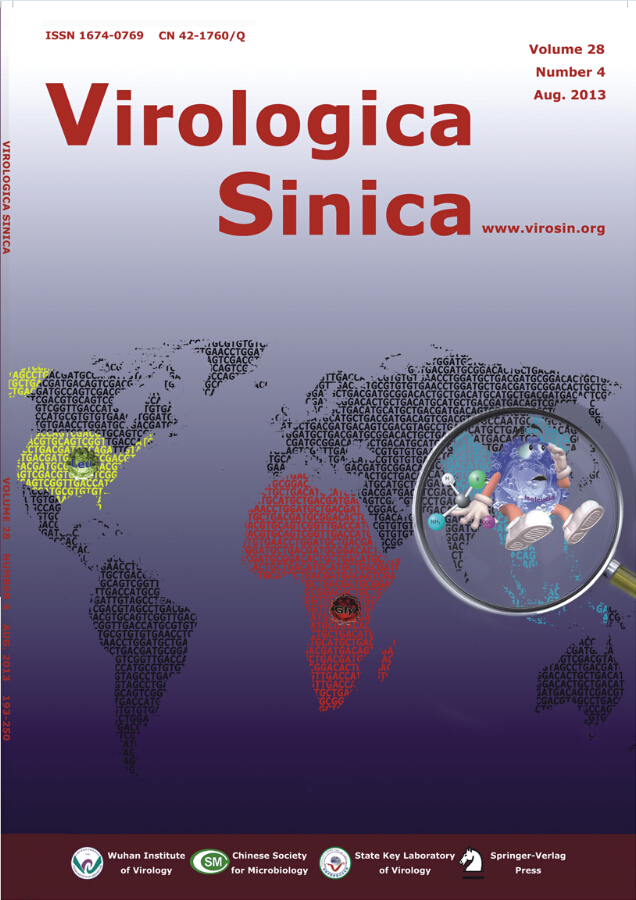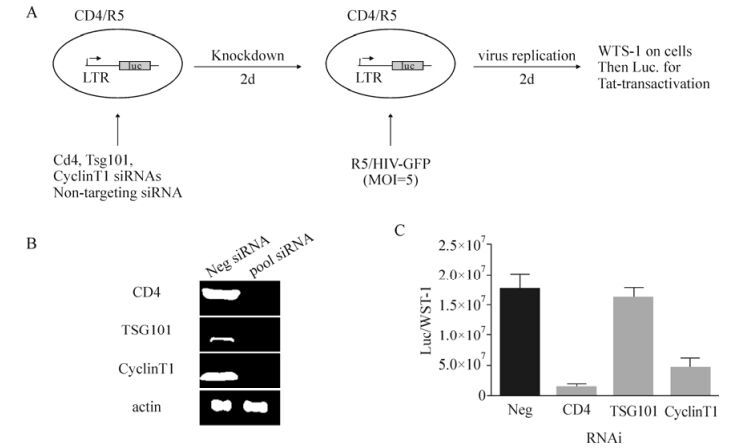-
Brass A L, Dykxhoorn D M, Benita Y, Yan N, Engelman A, Xavier R J, Lieberman J, Elledge S J. 2008. Identification of host proteins required for HIV infection through a functional genomic screen. Science, 319:921-926.
doi: 10.1126/science.1152725
-
Das A T, Baldwin C E, Vink M, Berkhout B. 2005. Improving the safety of a conditional-live human immunodeficiency virus type 1 vaccine by controlling both gene expression and cell entry. J Virol, 79:3855-3858.
doi: 10.1128/JVI.79.6.3855-3858.2005
-
Das A T, Klaver B, Harwig A, Vink M, Ooms M, Centlivre M, Berkhout B. 2007. Construction of a doxycycline-dependent simian immunodeficiency virus reveals a nontranscriptional function of tat in viral replication. J Virol, 81:11159-11169.
doi: 10.1128/JVI.01354-07
-
Garrus J E, von Schwedler U K, Pornillos O W, Morham S G, Zavitz K H, Wang H E, Wettstein D A, Stray K M, Côté M, Rich R L, Myszka D G, Sundquist W I. 2001. Tsg101 and the vacuolar protein sorting pathway are essential for HIV-1 budding. Cell, 107:55-65.
doi: 10.1016/S0092-8674(01)00506-2
-
Hosseinipour M C, Gupta R K, Van Zyl G, Eron J J, Nachega J B. 2013. Emergence of HIV drug resistance during first-and second-line antiretroviral therapy in resource-limited settings. J Infect Dis, 207 Suppl 2:S49-56.
-
Katlama C, Deeks S G, Autran B, Martinez-Picado J, van Lunzen J, Rouzioux C, Miller M, Vella S, Schmitz J E, Ahlers J, Richman D D, Sekaly R P. 2013. Barriers to a cure for HIV:new ways to target and eradicate HIV-1 reservoirs. Lancet, 381:2109-2117.
doi: 10.1016/S0140-6736(13)60104-X
-
Platt E J, Bilska M, Kozak S L, Kabat D, Montefiori D C. 2009. Evidence that ecotropic murine leukemia virus contamination in TZM-bl cells does not affect the outcome of neutralizing antibody assays with human immunodeficiency virus type 1. J Viro, 83:8289-8292.
doi: 10.1128/JVI.00709-09
-
Sadaie M R, Benter T, Wong-Staal F. 1988. Site-directed mutagenesis of two trans-regulatory genes (tat-Ⅲ, trs) of HIV-1. Science, 239:910-913.
doi: 10.1126/science.3277284
-
Shirakawa K, Chavez L, Hakre S, Calvanese V, Verdin E. 2013. Reactivation of latent HIV by histone deacetylase inhibitors. Trends Microbiol, 21:277-285.
doi: 10.1016/j.tim.2013.02.005
-
Walker B D, Yu X G. 2013. Unravelling the mechanisms of durable control of HIV-1. Nat Rev Immunol, 13:487-498.
doi: 10.1038/nri3478
-
Wei P, Garber M E, Fang S M, Fischer W H, Jones K A. 1998. A novel CDK9-associated C-type cyclin interacts directly with HIV-1 Tat and mediates its high-affinity, loop-specific binding to TAR RNA. Cell, 92:451-462.
doi: 10.1016/S0092-8674(00)80939-3
-
Zhang J X, Diehl G E, Littman D R. 2008. Relief of preintegration inhibition and characterization of additional blocks for HIV replication in primary mouse T cells. PLoS One, 3:e2035.
doi: 10.1371/journal.pone.0002035
-
Zhou H, Xu M, Huang Q, Gates A T, Zhang X D, Castle J C, Stec E, Ferrer M, Strulovici B, Hazuda D J, Espeseth A S. 2008. Genome-scale RNAi screen for host factors required for HIV replication. Cell Host Microbe, 4:495-504.
doi: 10.1016/j.chom.2008.10.004












